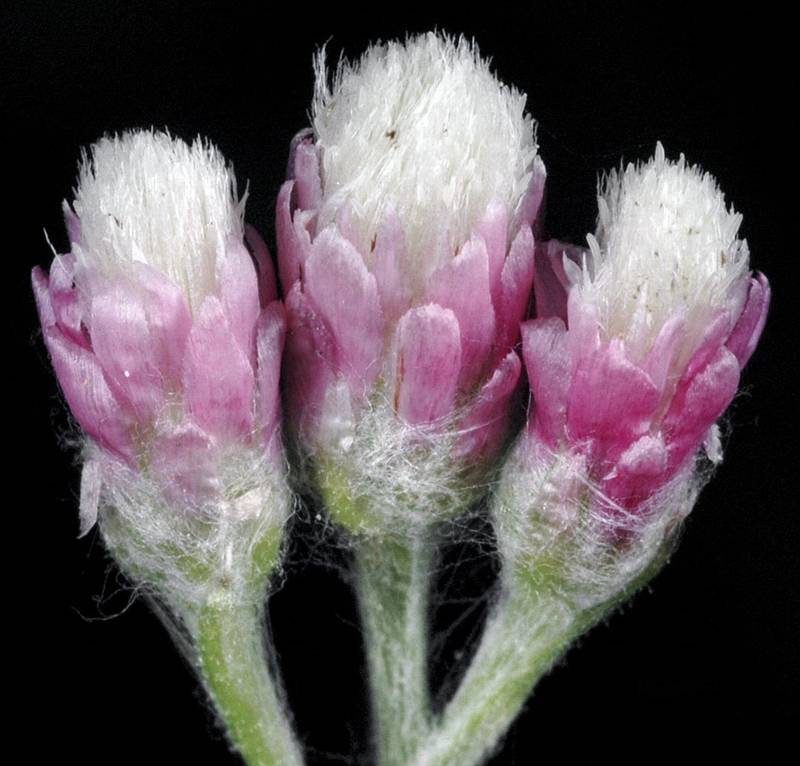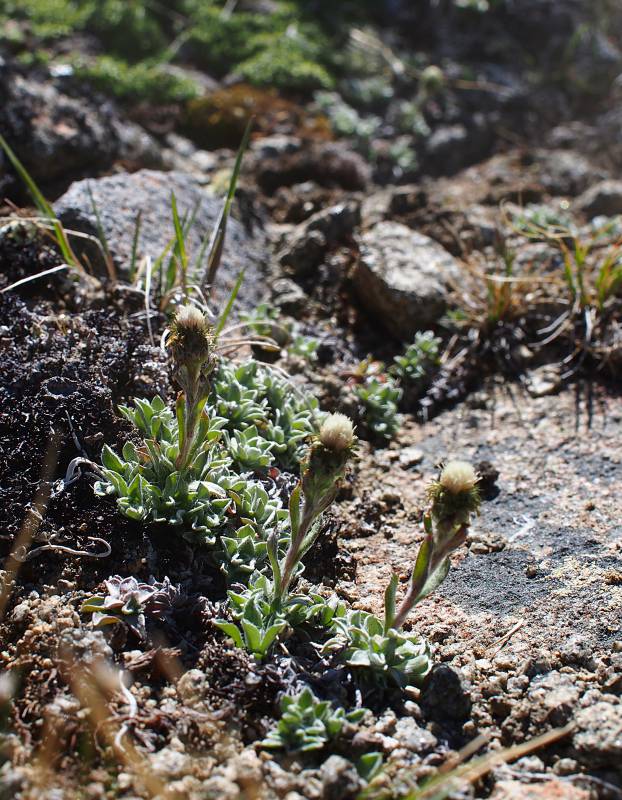|
|
pygmy pussytoes, single-headed pussytoes
|
| Dioecious, mat-forming, stoloniferous perennial 5-40 cm. tall; stolons up to 10 cm. long, decumbent; upper surface of the stems with stalked glands, the hairs white or purple. |
Perennials or subshrubs; dioecious or gynoecious; stems erect, 5-13 cm tall; stolons 2-4 cm in length. |
Leaves 1-nerved; upper surface of the leaves covered with silvery-white hairs; basal leaves spatulate or oblanceolate with a wedge-shaped base; cauline leaves linear, alternate. |
|
Heads several in a sub-capitate cyme; pistillate involucres 4-10 mm. long; scarious portion of the involucre bracts white, straw-colored or light yellow. |
Involucres staminate 5–7 mm, pistillate 5–8 mm, phyllaries distally brown, dark brown, black, or olivaceous; staminate corollas 2.5–3.5 mm, white, yellow, or red, narrowly funnelform or tubular (lobes usually 5, erect to recurved); pistillate corollas 3.5–4 mm, white, yellow, or red, narrowly tubular to filiform; receptacles flat to convex or ovoid, foveolate, epaleate; ray florets 0; disc florets mostly 20–100+; pappi: staminate 3–4 mm (none in gynoecious populations). |
Achene. |
Cypselae 1–1.3 mm tall, often glabrous, usually papillate. |
|
|
|
|
| June-August |
July-September |
| Dry to moist habitats, including meadows, ponderosa pine forest openings, rocky slopes, and floodplains from the lowlands to the alpine. |
Alpine meadows, ridges, and rocky outcroppings. |
Occurring on both sides of the Cascades crest in Washington, but more common east of the crest; Alaska to California, east to the Rocky Mountains and northern Great Plains, Great Lakes region, and eastern Canada.
|
Reported from the North Cascades in Washington; Alaska to British Columbia, east to Alberta, Montana, and Wyoming; also in the Russian Far East.
|
| Native |
Native |
| Not of concern |
Review Group 1 in Washington (WANHP) |
A. alpina, A. anaphaloides, A. corymbosa, A. dimorpha, A. flagellaris, A. geyeri, A. howellii, A. lanata, A. luzuloides, A. media, A. microphylla, A. monocephala, A. parvifolia, A. pulcherrima, A. racemosa, A. stenophylla, A. umbrinella |
A. alpina, A. anaphaloides, A. corymbosa, A. dimorpha, A. flagellaris, A. geyeri, A. howellii, A. lanata, A. luzuloides, A. media, A. microphylla, A. parvifolia, A. pulcherrima, A. racemosa, A. stenophylla, A. umbrinella |
| |



